Why Care About Wildlife
People have different reasons for caring about the well-being of wildlife. Whether you are a hunter, hiker, bird watcher, animal lover, educator or scientist, caring about wildlife is something that should matter to everyone. In addition to the spiritual and intrinsic value of wildlife, they are also indicators of the overall health of our environment. If wildlife populations are diverse and thriving, we can rest assured that the ecosystems that human systems depend on will continue to provide clean air, clean water, and other important natural resources vital to human health. In contrast, a decline in wildlife populations indicates that our environment is in distress and serves as a call to action for land protection and management.
Human infrastructure and development have substantially restricted certain natural disturbance processes that historically provided diverse open habitats for wildlife. In particular, flooding and fire are greatly constrained across the landscape today. While control of flooding and fire is essential to protect human life and property, it also creates an obligation on our part to provide the dynamic habitats for wildlife that these natural processes formerly did.
Why is Habitat Management Needed? MassWildlife
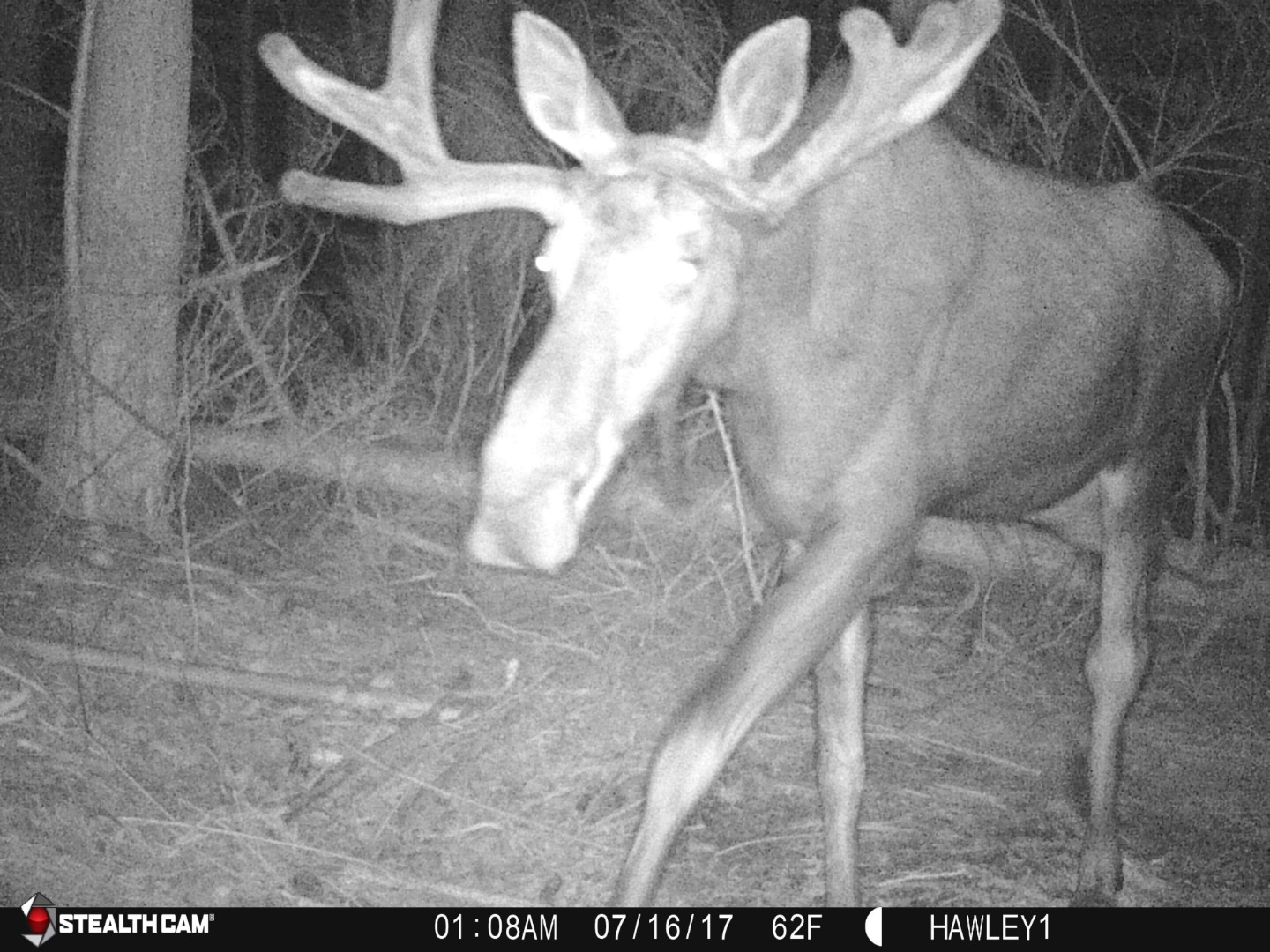
What is at Risk
Habitat Loss. Habitat loss is responsible for declining wildlife populations all over the world. This can happen as a result of development, pollution, the introduction of invasive plants and insects, fragmentation, or any time a natural habitat is no longer able to support its native plant and animal populations. As our climate changes rapidly, the protection of critical habitat for our wildlife populations is becoming increasingly important, even here in Massachusetts.
Massachusetts has more than 3 million acres of forested land. This important forested land provides a host of benefits such as carbon sequestration, clean air and water, and habitat for species that prefer mature forests. However, forests in Massachusetts are severely lacking in age class diversity. In fact, much of our state’s forests land is about the same age, between 80-100 years old. Wildlife that depend on the food, shelter, and nesting grounds found in a young forest can’t find the habitat they need to survive. Grasslands and forests with older trees are also extremely rare.
All these landscapes are under pressure from climate change, with warming temperatures and unpredictable amounts of rain and snow each year. Increasing the diversity of forested and grassy landscapes is critical to animals' survival.
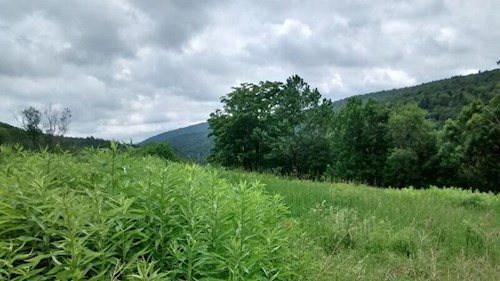
Grasslands. This habitat is made up of open fields and meadows dedicated to birds and wildlife. With a mix of small plants and a plethora of native grasses, this is one of the fastest vanishing habitats with the steepest decline for birds that live there. Threatened pollinators as well as animals that live in early and mature forests benefit from nearby grasslands as well.
Seven species of state-listed and Species of Greatest Conservation Need (SGCN) birds in Massachusetts are highly dependent on grassland habitat for nesting, for overwintering, or during migration. Most of the nesting sites for these species are near the coast of the mainland or on the larger offshore islands. However, the Upland Sandpiper, Vesper Sparrow, and Grasshopper Sparrow are also found in scattered inland locations, mostly grasslands at airports (e.g., Westover Air Reserve Base, Plymouth Airport). Five other SGCN birds that are uncommon and declining in the state are also associated with grassland habitats, including the Eastern Meadowlark, Eastern Whip-poor-will, Northern Bobwhite, American Kestrel, and American Woodcock.
In Massachusetts, grasslands are the preferred habitat for 38 state-listed and SGCN plants. Grassland plants occur on glacial outwash plains and similar acid-soil habitats in the central part of the state, including Upright False Bindweed, Midland Sedge, Houghton’s Flatsedge, Wild Senna, Wild Pink, and Sand Violet. Still others are only found in grasslands in western Massachusetts, particularly on calcareous soils, including Culver’s-root, Narrow-leaved Vervain, Willow Aster, and Gattinger’s Panic-grass. Eight state-listed and SGCN grassland plants each have only one known population in the state.
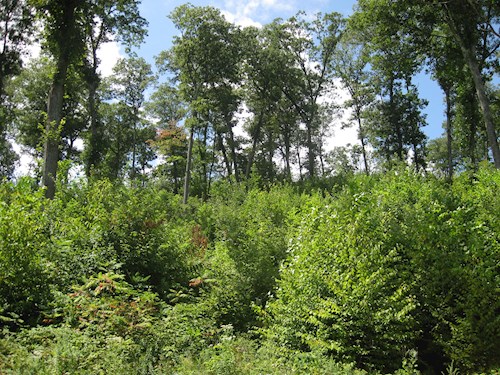
Young Forests and Shrublands. Mass Audubon’s 2017 State of the Birds Report revealed that forest birds in Massachusetts are in decline due to a lack of young forest, or early successional habitat. Mass Audubon uses birds as a symbol of a resilient system, meaning that birds are an indicator species. If birds are in decline, we know that other wildlife species are in decline too. When we work to create and manage young forest habitat for birds, we are also benefiting species such as rabbits, bear, moose and deer that depend on young forests to survive.
Young forests were extremely common in Massachusetts during the late 19th and early 20th century as abandoned farmland reverted to forest cover (Figure 4-29). Today, however, only 5% of forestland in the state occurs in an early-successional (seedling/sapling) condition (Alerich 2000). Early successional habitats are currently less common in southern New England than they were in presettlement times (Litvaitis 1993, DeGraaf and Miller 1996). Wind events still provide some young forest in Massachusetts today, but the impact of fire and beaver flooding on the landscape has been curtailed as a result of European settlement and subsequent development
(Askins 2001).
Among vertebrate wildlife species in New England, 13% (3 of 13) of amphibians, 62% (16 of 26) of reptiles, 37% (79 of 214) of birds, and 72% (46 of 64) of mammals use shrub/old-field habitats (DeGraff and Yamasaki 2001). Some vertebrate species demonstrate preferred use of shrub/old-field sites, including reptiles like the Eastern Ratsnake, Eastern Hog-nosed Snake, and Spotted Turtle; birds such as the Willow Flycatcher, Blue-winged Warbler, and Song Sparrow; and mammals like the New England Cottontail, White-footed Mouse, and Ermine (DeGraff and Yamasaki 2001).
Massachusetts State Wildlife Action Plan, 2015
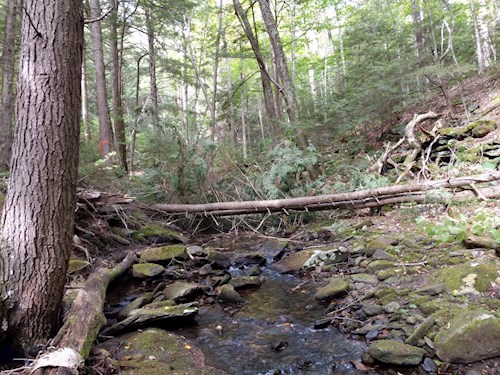
Old Growth and Old Growth Structure. Old growth forests, 200 years or more in age, are extremely rare in the Massachusetts landscape. Most of our mature woods are from 80 to 100 years in age. Characteristics of old growth of woodlands include: large trees, lots of wood on fallen on the ground, and many standing dead trees called "snags." Old forests have trees of many different ages, with small openings created by tree-fall, storm damage and other disturbances. Less than .1% of our Massachusetts forests look like this. Through environmentally appropriate cutting of trees in younger woodlands (from 100-200 years), forests can acquire these characteristics. Setting aside land to age naturally by making reserve wildlands, as well as actively shaping managed forests to look like old forests and have "old growth structure" will help animals who depend on it. Letting large trees grow larger helps sequester carbon, reducing levels of this greenhouse gas in the atmosphere.
Old growth: forests that were never directly impacted by humans. This is a very rare condition in southern New England due to the historic prevalence of agriculture, logging, and other land uses. These forests often contain a well-developed structure, including large trees, multiple-aged trees, and abundant downed wood. Forests that established and grew following human land use, such as agriculture or logging. Most of the forests currently found in our region are best described as second-growth and often consist predominantly of even-sized and even-aged trees.
Old-growth forest was once the predominant natural condition across southern New England before European settlement; however, it is now one of the rarest habitats in our region, constituting less than one-tenth of one percent (<0.1%) of our forests.
Some plants, lichens, and mosses are dependent on old-growth characteristics that are currently lacking or less abundant in our second-growth forests. Also, many species, particularly native birds including some woodpeckers, warblers, and thrushes, have been shown to reach greater abundance in forests with old-growth characteristics such as large trees with cavities. These dense populations are crucial for populating or re-populating other areas and are therefore central to the long-term viability of our native species.
Restoring Old Growth Characteristics, UMass Amherst, Extension
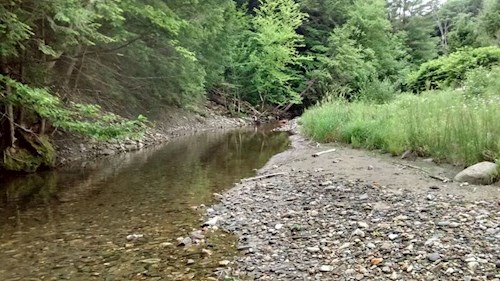
Rivers, Streams and Wetlands. Land along waterways provide some of the richest areas of habitat for fish, birds, insects, mammals and plants. Protecting sensitive wetlands, reconnecting floodplains and increasing the amount of wood in streams helps boost native animal populations, as well as shielding human infrastructure from flood damage in ever more frequent extreme weather events.
Riparian areas are lands that occur along watercourses and water bodies. Typical examples include flood plains and streambanks. ..Riparian areas possess some similar ecological characteristics such as energy flow, nutrient cycling, water cycling, hydrologic function, and plant and animal population.
Wetlands are among the most productive ecosystems in the world, comparable to rain forests and coral reefs. An immense variety of species of microbes, plants, insects, amphibians, reptiles, birds, fish, and mammals can be part of a wetland ecosystem. Physical and chemical features such as climate, landscape shape (topology), geology, and the movement and abundance of water help to determine the plants and animals that inhabit each wetland. Wetlands have important filtering capabilities for intercepting surface water runoff from higher dry land before the runoff reaches open water.
Massachusetts Wetlands, Massachusetts Office of Coastal Zone Management
Habitat Reports
Mass Audubon 2017 State of the Birds Report
World Wildlife Fund 2018 Living Planet Report
What We Can Do
Woodland Habitat Management. Approximately 79% of our state’s 3 million forested acres is privately owned. This means that private forest landowners have an opportunity to significantly contribute to the creation and management of a diversity of habitat for birds and other wildlife. Massachusetts has many tools, programs and cost share funds available for forest landowners who are interested in managing their woods for wildlife. A DCR Forest Stewardship Plan with a Bird Habitat Assessment is a good place to start. Click the resources at the bottom of the page to learn more.
"Working with a forest plan and a professional forester has broadened our appreciation for enhancing the benefits of our land. For example we have opened areas where scarce oak trees can benefit from additional light thus providing more acorns for wildlife. We opened a small overgrown apple orchard and now see signs of bear. After 20 years we continue to see the benefits of careful forest stewardship."
Judy and Dudley Williams, forest landowners in Plainfield, MA
Conservation. Keeping natural landscape open and green for the future is essential to providing critical wildlife habitat. Learn more about conservation of land in western Massachusetts at the Franklin Land Trust. Read on for information about habitat management.
Grasslands. This habitat is made up of open fields and meadows dedicated to birds and wildlife. With a mix of small plants and a plethora of native grasses, this is one of the fastest vanishing habitats with the steepest decline for birds that live there. Threatened pollinators as well as animals that live in early and mature forests benefit from nearby grasslands as well. Maintaining these fields is difficult: timing and size matters. Grasslands require mowing every three years to not turn into forests, but mowing during peak hay times in June and July destroys nests. Wildlife-minded hay farmers delay harvest timing to benefit the animals.
The greatest management needs for grassland habitats in Massachusetts are prescribed fire (sometimes in combination with mechanical cutting) and control of invasive exotic vegetation. In combination, these two management activities promote native grassland habitats (in terms of both species composition and structure), which in turn promote the persistence of animal species that depend on native grassland plants.
Restoration and management of grasslands is a high priority, particularly on protected lands. Areas currently dominated by nonnative cool-season grasses and other invasive plants should be converted to grasslands dominated by native grasses, forbs, and heath by mechanical cutting, prescribed fire, and seeding. At some existing grassland sites expansion is desirable, and may be achieved by converting adjacent areas dominated by woody vegetation.
Massachusetts State Wildlife Action Plan, 2015
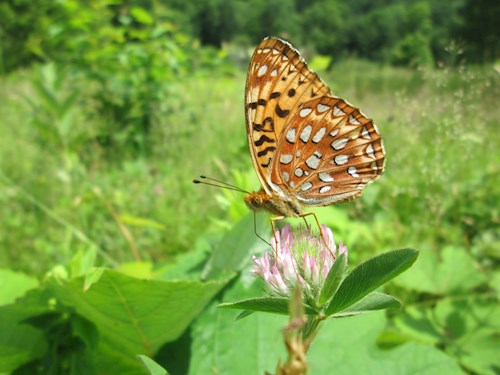
Young Forests and Shrublands. Historically created in the northeast US by beaver activity, storm damage and indigenous peoples' fire management, large areas of shrubs and young trees provide forage, shelter and productive breeding areas for animals. From small (2.5 to 5 acre) patch cuts, to larger scale habitat-designed clear cuts (20 acres or larger), managing mature woodlands to create young forest supports diverse bird, insect and mammal populations. Mosaics of different aged trees of a variety of species develop: from light-loving, early successional trees like birch and poplar, to light loving mature forest trees such as oak and pine, to shade tolerant older forest trees like maple, beech and hemlock. Each supports different animals, is resistant to diverse diseases and pests, provides a variety of wood or agricultural products, and thrives in different development stages of the forest.
Collectively, young forests and shrublands are referred to as thicket habitats (Litvaitis 2003), and provide important resources for several wildlife species of conservation concern. Young-forest habitats are typically dominated by rapidly growing trees and shrubs, and generally occur when a mature forest canopy is disrupted, allowing sunlight to stimulate the growth of herbaceous and woody vegetation on the forest floor. Shrublands are defined here as relatively ephemeral, upland habitats that are dominated by low woody vegetation (generally less than 3 m tall), with varying amounts of herbaceous vegetation and sparse tree cover.
Because these habitats tend to be ephemeral on the landscape, active management is necessary to either maintain suitable young forest/shrubland patches or to create new ones. Patch size is also an important consideration, with 10- 20-acre patches being the minimum size to ensure these species can meet their basic life requirements
Massachusetts State Wildlife Action Plan, 2015

Old Growth and Mature Forests. Old growth forests have large trees, lots of wood fallen on the ground, and many standing dead trees called "snags". They have trees of many different ages, peppered with small openings created by tree-fall, storm damage and other disturbances. Setting aside land to age naturally by creating reserve wildlands, as well as actively shaping managed forests to look look like old forests and have "old growth structure" will help animals who depend on it. Letting large trees grow larger helps sequester carbon, reducing levels of this greenhouse gas in the atmosphere.
Passive Management. This approach involves letting nature take its course and waiting for forest development and natural disturbance to create the structure without any direct human intervention. Disturbance events such as windstorms, ice and snowstorms, and insect outbreaks strongly influence forest structure by creating old-growth characteristics such as gaps in the forest, standing dead trees, pits and mounds from blown over trees, and downed logs on the forest floor. Because no trees are harvested using passive management, this approach will produce the most natural appearance and conditions in your woods in the long run (i.e., no cut stumps or skid trails). Nonetheless, developing old-growth structure using this approach will often take over a century based on tree growth and the types of natural disturbance in southern New England.
Planned forest management provides the opportunity to accelerate the development of old-growth structure (bigger trees, standing dead trees, various canopy gaps, diversity of tree sizes, downed logs) through carefully planned treatments and allows for simultaneous economic return through timber management. Forest management provides an opportunity to mimic natural disturbance, increasing the growth of trees and the development of old-growth characteristics.
Restoring Old Growth Characteristics, UMass Amherst, Extension
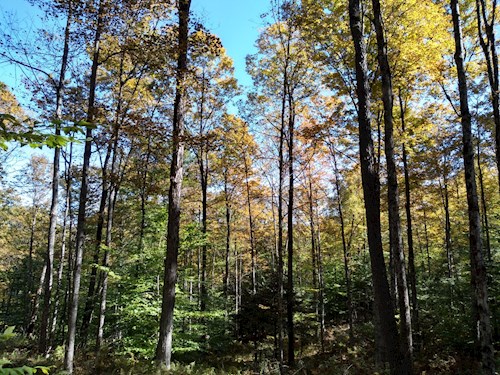
Rivers, Streams and Wetlands. Land along waterways provide some of the richest areas of habitat for fish, birds, insects, mammals and plants. Protecting sensitive wetlands, reconnecting floodplains and increasing the amount of wood in streams helps boost native animal populations, as well as shielding human infrastructure from flood damage in ever more frequent extreme weather events.
Degraded stream systems reflect degraded conditions in their contributing watersheds. Degraded or altered conditions in all watersheds in the working landscape reflect similar patterns, from forested or shrub-steppe wildlands managed for grazing and timber production, to agricultural lands, to intensively urbanized watersheds. These patterns of watershed “hardening” tend to increase the magnitude and frequency of high flows after precipitation events, and increase sediment and pollutant inputs into stream systems.
Stream habitat restoration or rehabilitation begins with an adequate assessment of watershed conditions, and fits within a continuum ranging from passive measures such as modifying land use activities within the watershed to aggressive channel realignment and structural measures, all evaluated and designed in the context of an adequate assessment of watershed conditions. The essential first step in stream habitat restoration is to conduct an adequate comprehensive watershed analysis and assessment
Assessments concerning stream flow regime may include an evaluation of how the flow regime has been affected by dams, water withdrawals, stormwater drainage networks, wetland drainage and fill, floodplain drainage and fill, land cover changes, stream channel and floodplain modifications, and by increasing amounts of impervious surface in the watershed. Or it may include an assessment of the connectivity of stream channels, floodplains, wetlands, side channels, and other offchannel habitats. How much of the floodplain is no longer accessible to overbank flows?
Stream Habitat Restoration Guidelines 2012, Washington State Aquatic Habitat Guidelines Program

Resources
NRCS: Managing Forests for Fish and Wildlife
Habitat Management Reference
Why is Habitat Management Needed? MassWildlife
Best Management Practices for Nesting Grassland Birds, Mass Audubon
Restoring Old Growth Characteristics, UMass Amherst Extension
Stream Habitat Restoration Guidelines, Washington State Aquatic Habitat Guidelines Program
Protecting Wetlands in Massachusetts, MA Department of Environmental Protection
More Information
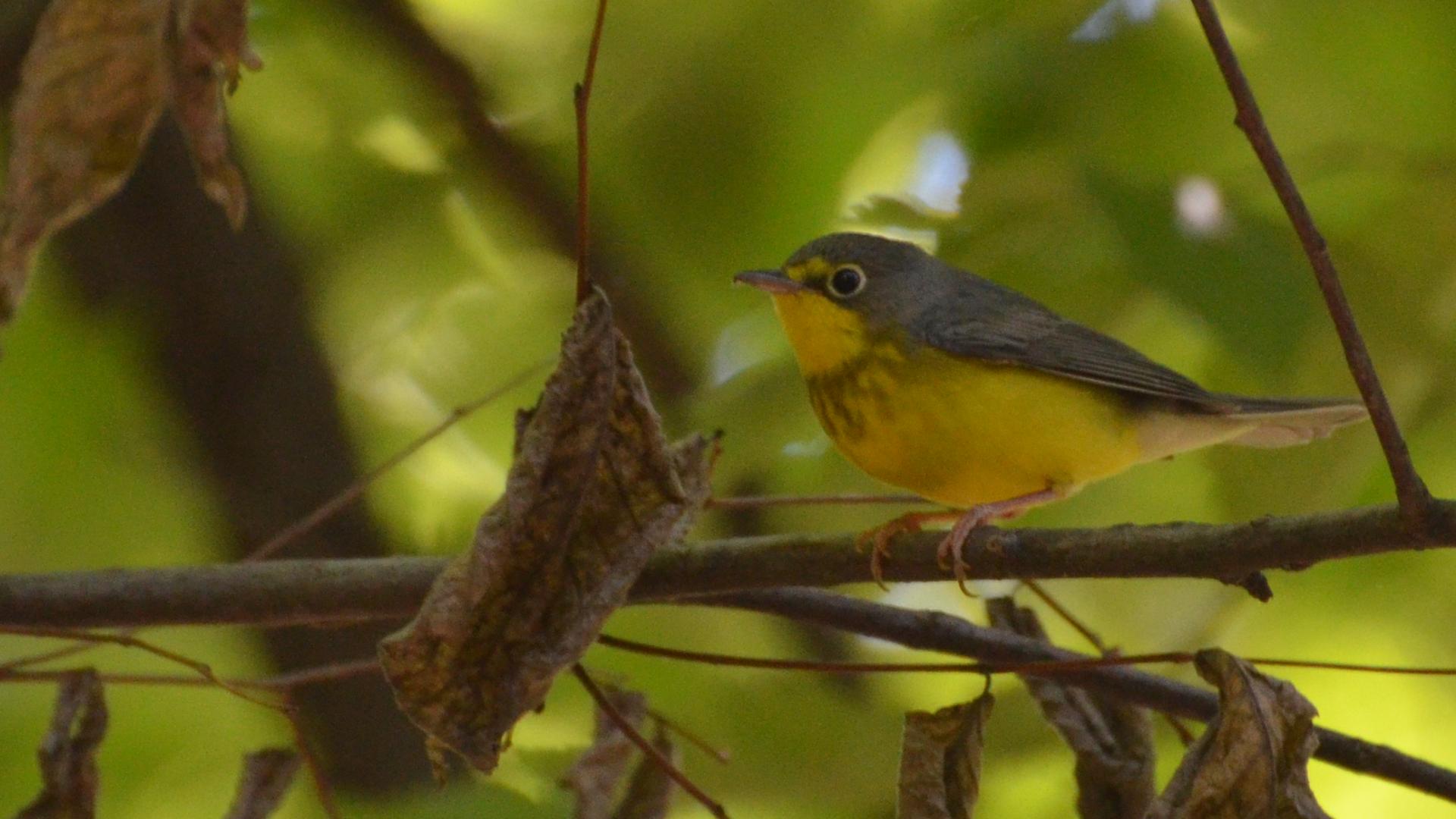
Cost Share Programs:
MA Department of Conservation and Recreation - Working Forest Initiative (WFI)
https://www.mass.gov/guides/working-forest-initiative
MA WFI - Forest Stewardship
https://www.mass.gov/service-details/forest-stewardship-program
MA WFI - Foresters for the Birds: Bird Habitat Assessment
https://www.mass.gov/guides/working-forest-initiative#foresters-for-the-birds-assessing-your-woods-for-bird-habitat
USDA Natural Resource Conservation Services - Massachusetts
https://www.nrcs.usda.gov/wps/portal/nrcs/site/ma/home/
Information:
MA Division of Fisheries and Wildlife - MassWildlife
https://www.mass.gov/orgs/division-of-fisheries-and-wildlife
MassWildlife Landscape Goals for Wildlife Habitats
https://swcssnec.org/wp-content/uploads/MassWildlife-Landscape-Goals-for-Wildlife-Habitats.pdf
Masswoods.org - UMass Amherst Extension
MassWildlife's Natural Heritage and Endangered Species Program
https://www.mass.gov/orgs/masswildlifes-natural-heritage-endangered-species-program
Ecological Management - Mass Audubon
https://www.massaudubon.org/our-conservation-work/ecological-management

